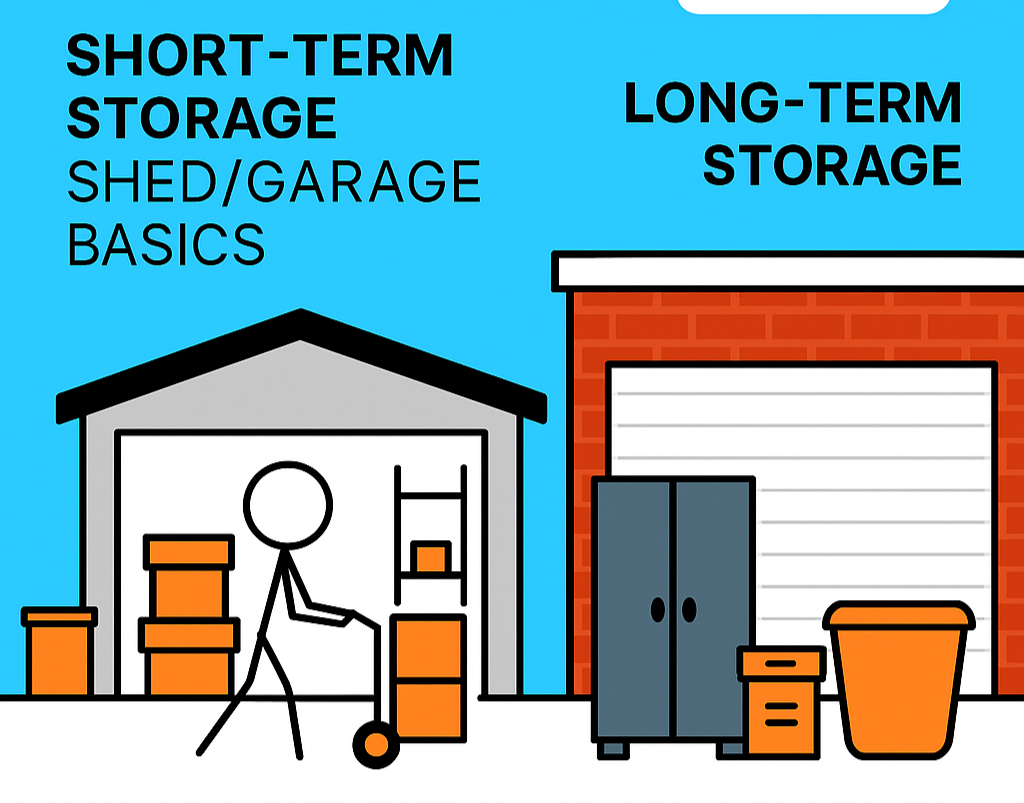🧳 Storage 101: From Short-Term Shed Solutions to Long-Term Garage Strategy
🧳 Storage 101: From Short-Term Shed Solutions to Long-Term Garage Strategy
Whether you're downsizing, renovating, or managing a property turnover, storage is often the unsung hero of a smooth transition. But not all storage needs are created equal. Understanding the basics of short-term and long-term storage can help you protect what matters, reduce stress, and make space for what’s next.
🛠️ Short-Term Storage: Shed & Garage Basics
Short-term storage is ideal for temporary transitions—think weekend cleanouts, estate sorting, or staging a property for lease. The goal is accessibility, flexibility, and speed.
🔹 Best Uses:
Items waiting for donation, sale, or disposal
Seasonal tools and equipment
Furniture and appliances during renovations
Inventory overflow for small businesses
🔹 Key Tips:
Keep it modular: Use stackable bins and shelving to maximize space and visibility.
Label everything: Even for short stints, clear labeling prevents confusion and saves time.
Elevate off the ground: Use pallets or risers to protect items from moisture and pests.
Ventilate: Garages and sheds can trap humidity—crack a window or use moisture absorbers.
Short-term storage should feel like a pause, not a pile. Keep pathways clear and group items by destination (e.g., “donate,” “keep,” “sell”) to streamline decision-making.
🧳 Long-Term Storage: Planning for the Future
Long-term storage is about preservation and peace of mind. Whether you're holding onto heirlooms, business records, or seasonal décor, the focus shifts to protection and organization.
🔹 Best Uses:
Sentimental items not ready for display or use
Archived documents and business assets
Holiday decorations and off-season gear
Furniture awaiting future placement
🔹 Key Tips:
Climate control matters: For anything sensitive to temperature or humidity, consider insulated garages or off-site storage units.
Invest in quality containers: Acid-free boxes, vacuum-sealed bags, and sturdy bins prevent damage over time.
Create a digital inventory: Photograph items and log their location—especially helpful for estate planning or insurance.
Schedule check-ins: Revisit your storage every 6–12 months to reassess what’s still relevant.
Long-term storage should feel intentional. It’s not just about keeping things—it’s about honoring them.
🧭 Final Thoughts: Storage as a Transition Tool
At CRS, we see storage not as a stopgap, but as a bridge. Whether you're preparing a space for a new leaseholder or helping a family navigate change, thoughtful storage planning can ease emotional weight and logistical strain.
From broom-swept garages to climate-controlled archives, storage is where stories pause—and where new chapters begin.

